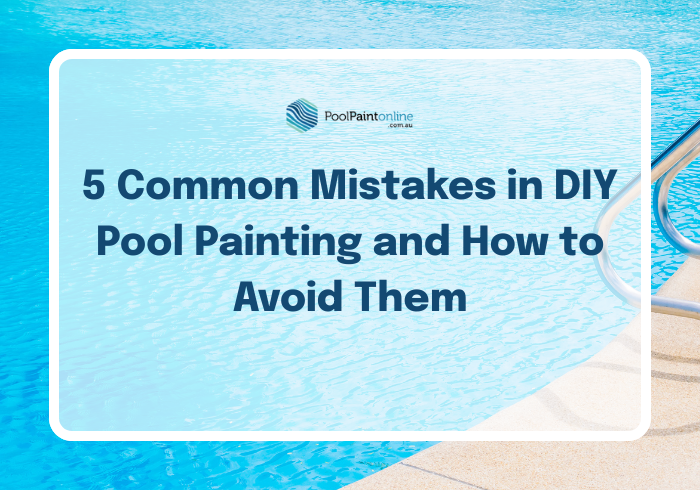
5 Common Mistakes in DIY Pool Painting and How to Avoid Them
Share
Thinking of Painting Your Pool Yourself? Read This First
DIY pool painting can save you thousands — if it’s done right. But even experienced DIYers make simple mistakes that lead to flaking paint, uneven finishes or costly rework.
Here are the 5 most common DIY pool painting mistakes we see (and how to avoid them), so your pool gets the professional look it deserves — without the professional price tag.
Mistake 1 – Poor Surface Preparation
Failing to clean, patch or etch your pool surface properly is the #1 reason DIY paint jobs fail.
Paint won’t bond to dirty, greasy, chalky or unprepared surfaces — it will peel, blister or flake prematurely.
✅ How to avoid it: Follow our Step-by-Step Guide to Preparing Your Pool to ensure a clean, dry and properly profiled surface. Take your time with this stage — it's the foundation for everything.
Mistake 2 – Choosing the Wrong Paint Type
Not all pool paints are interchangeable. Epoxy and chlorinated rubber have different properties, prep needs, and surface compatibility.
Using the wrong type — or mixing new paint over old incompatible coatings — causes adhesion failure.
✅ How to avoid it: Know your surface and existing coating.
- For bare concrete, fibreglass or marblesheen, use Luxapool® Epoxy Paint.
- For pools previously painted with rubber-based paint, choose Luxapool® Chlorinated Rubber.
Mistake 3 – Skipping Primer or Using the Wrong One
A primer isn't always required — but when it is, it's critical. Skipping primer (or using the wrong one) can cause bubbling, flaking, and reduced lifespan of the coating.
✅ How to avoid it: Always check if your surface type needs a primer or sealer. Epoxy typically requires a primer on bare or porous concrete. Chlorinated rubber often doesn’t — but compatibility matters.
Need help? Refer to the product info or ask our team which primer suits your situation.
Mistake 4 – Painting in the Wrong Weather Conditions
Weather can make or break your painting results. Painting in high humidity, rain, or extreme heat can ruin the finish or interfere with curing.
✅ How to avoid it:
- Aim for mild, dry days (around 15–30°C).
- Avoid painting in direct sunlight or when rain is forecast.
-
Ensure the surface is completely dry before starting. Moisture under the paint is a recipe for failure.
Mistake 5 – Ignoring Cure Times and Refilling Too Soon
You’ve finished the job and are eager to swim — but refilling too early can wreck the entire coating. The paint needs to fully cure to withstand water pressure and chemicals.
✅ How to avoid it:
Follow cure time instructions precisely — this varies between epoxy and chlorinated rubber. Epoxy usually needs up to 7 days; chlorinated rubber can be faster, but still requires patience.
Always read the datasheet, and don’t take shortcuts with curing time.
Quick DIY Pool Painting Tips
- 🧽 Don’t skip the acid etch or sanding step
- 🎨 Match your paint type to your existing coating
- 🌤️ Watch the weather — avoid humid or wet days
- ⏱️ Respect drying and curing timelines
- 🧪 Use only compatible primers and sealers
-
🧰 Invest in proper gear — rollers, trays and safety equipment
Avoid These Mistakes with Expert Support and Genuine Products
At Pool Paint Online, we make DIY pool painting easier with genuine Luxapool® paints, expert guidance and fast delivery.
Need help choosing the right paint or prep products? We’ve got your back.
📞 Contact us today to get step-by-step advice and avoid costly painting mistakes.

